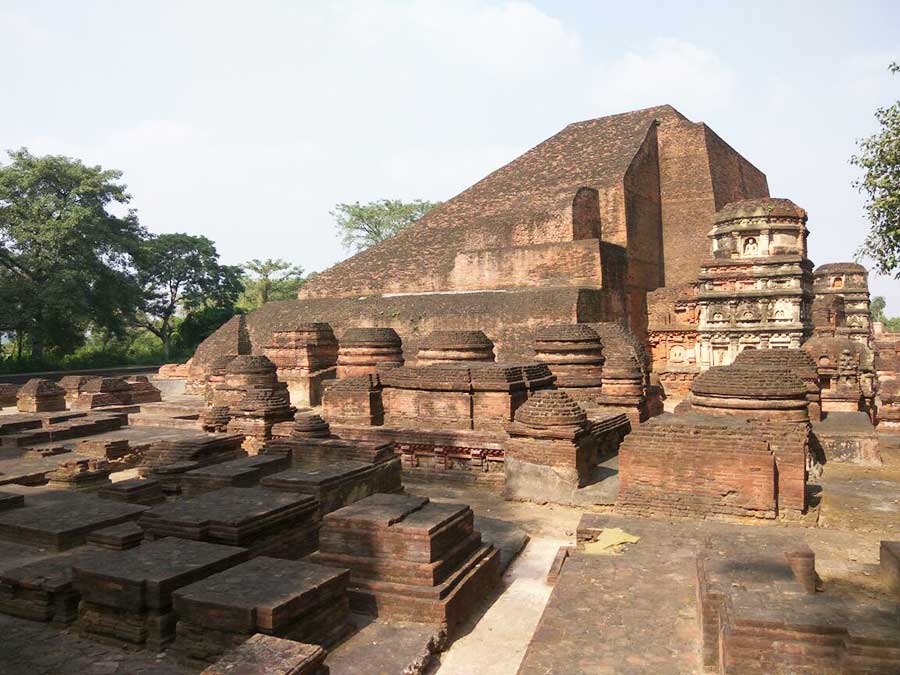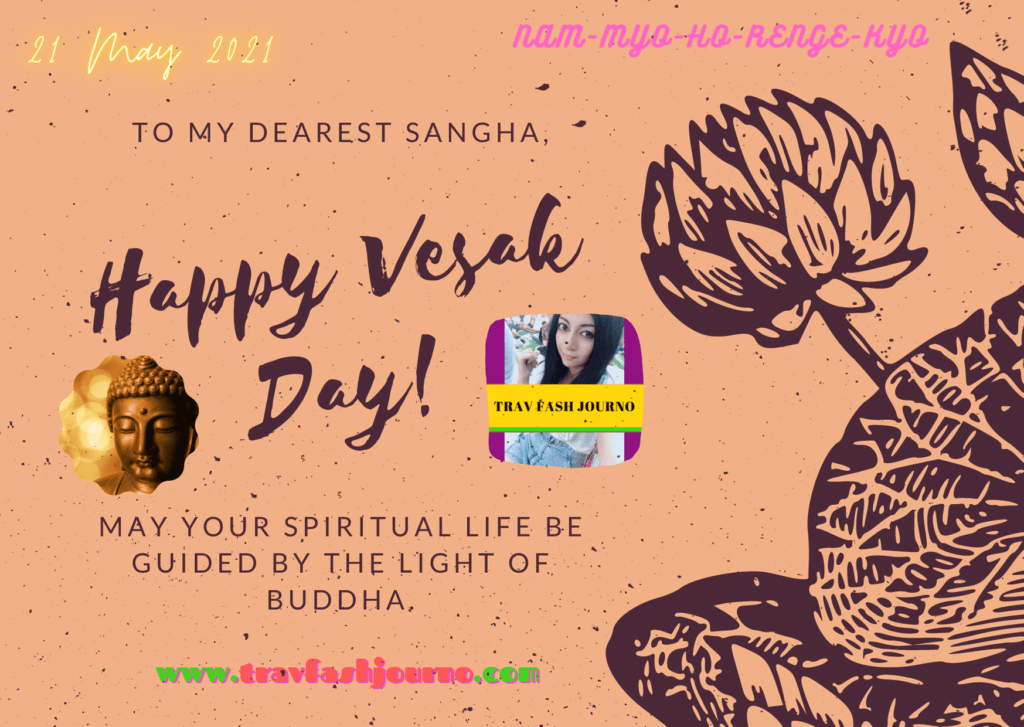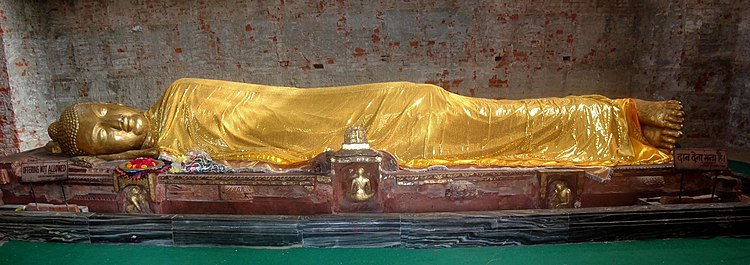Buddhist Sites in India
Has anyone thought about what Buddhism is? How did it start? How it spread from India to South Asian Countries and eventually towards the West? What is its importance? Why are a number of monks interested to be Bodhisattvas? Who do we call a Bodhisattva? Why do people appreciate Buddhism? How does it invoke compassion within you? Why is Buddhism popular? Most importantly, where in India are holy Buddhist sites concerned with the Lord Buddha? You all must be eager to travel after lockdown to visit the places where Buddha has been on a journey to right? But, please make sure, you are wearing a mask twice a fold to prevent Covid infection in your travels. BTW, Happy Vesak Day! (I will speak about Vesak within this article as well or you can click on the above photo to know more, keep reading)!
All these questions must be revolving around your petite brain right? I was in your position before, before I embraced Buddhism. All these will be explained in this article. It’s really interesting to read about all about Buddhism and the places of interest. Who knows, you may get to travel and click pictures of your own and even educate others over social media!
Vesak Day – May 26, 2021
Vesak day this year is being celebrated on May 26, 2021! What is it about?
As per United Nations,
“Vesak”, the Day of the Full Moon in the month of May, is the most sacred day to millions of Buddhists around the world. Day of Vesak two and a half millennia ago, in the year 623 B.C., was the day when the Buddha was born. It was also on the Day of Vesak that the Buddha attained enlightenment, and it was on the Day of Vesak that the Buddha in his eightieth year passed away.
It is a very special day for uncountable Buddhists and their sect, and many pilgrims flock over to Lumbini, Nepal to experience the beautiful gardens where Siddharth Gautam was born (in 623 BC). Moreover, take a look at the above photo for reference. You must take a trip to Nepal to experience the same. This place is now on my bucket list.
Bodh Gaya, Bihar
Bodh Gaya is the place where the Buddhist Enlightenment all began. It is the place where Prince Siddharth (earlier born in Lumbini, Nepal) attained enlightenment, 2500 years ago; that too under a bodhi tree. This tree is considered to be sacred among the pilgrims that arrive annually at this UNESCO World Heritage Site. Here, Prince Siddharth achieved Nirvana and became Buddha. On Buddha Purnima, a large number of devotees arrive at Gaya to pay respects to their mentor, Lord Buddha. There are many monasteries (Buddhist Temples) that belong to nations such as China, Bhutan, Japan, Nepal, Myanmar, and Thailand. Moreover, there are such temples that also belong to the lesser sects of Indian Buddhism. In the above picture, you can see the Great Buddha Statue that is 80 feet tall. Massive structure right? I would love to pay my respects here! Exciting!
Khushinagar, Uttar Pradesh
Khushinagar is the city where Lord Buddha rested in Samadhi. It is one of the holiest sites for Buddhists. Memorial stupas and other pillars have been made in order to honor Lord Buddha and his grace. Mahaparinirvana Temple is Khushinagar’s major attraction with over 20-feet tall statue of the reclining Buddha. The statue was carved in the 5th century. KUPSTDC tourist bungalow (Padauna), located in Kasia is the nearest town (55 km from Gorakhpur) is the place where Lord Buddha, the Shakyamuni, is said to have ate his last meal. This is equally interesting to witness the place where he consumed his food for the last time.
Kapilvastu, Uttar Pradesh
Kapilvastu is one of the famous sites for the Buddhist Pilgrimage. Though, its name has been changed to “Piprahwa”. The original buddha, earlier known as Prince Siddhartha Gautam (now known as Gautam Buddh) ruled Kapilvastu as his ‘Shakya’ kingdom. Kapilvastu is one of the prime cities that played a part in Siddhartha Gautam’s life onwards his journey to become the Buddha. It is the place where he saw the ‘three sights’ that motivated him to walk on the path of Buddhism. From Kapilvastu, he traveled for six years towards Bodh Gaya. During his journey, he wanted to find out why people suffered. Also, Kapilvastu is a checkpoint to depart for Lumbini, Nepal (Buddha’s birthplace). I am a history buff! This piece of information is really cool! I would love to see where Lord Buddha had ruled previously in his prince times. How about booking a trip?
Rajgir, Bihar

Rajgir, the former capital of the Magadh Empire, is known for its hot springs. Pataliputra succeeded Rajgir as the new capital back in the days. However, during the rains, Lord Buddha would take abode at ‘Griddhakuta Hill’. This hill belonged to the Ratnagiri hills group. At opposite ends, Ratnagiri hosted the first international Buddhist council, within the ‘Saptaparni Cave’ to commemorate and inscribe Lord Buddhist teachings as a record. This was done after Buddha’s death. The Japanese Buddhists were very kind and compassionate. They built a stupa just above the cave with an aerial ropeway connected to the bottom of the hill from the top. This was accomplished on the occasion of having completed 2500 years of the Buddhist First Council. But, don’t forget, Nalanda University (a UNESCO WORLD HERITAGE SITE) remains were found not very far from here in 411 AD, just 11 km from Kapilvastu. Intriguing right?
Note to Readers:
There are many others that you can read about edicts and stupas from Asoka’s (another disciple of Lord Buddha) at Outlook India Traveller – Buddhist Pilgrimage Sites. They have very detailed information of the six major Buddhist sites to travel to. My article is inspired by Outlook India’s write-up.
Miracle Mantra:
What is the Lotus Sutra? What are these magical words ‘Nam-Myo-Ho-Renge-Kyo? Eager to learn? Check out my next article – COMING SOON!







